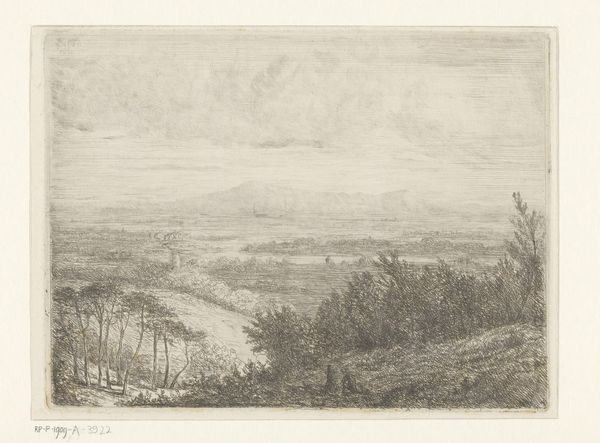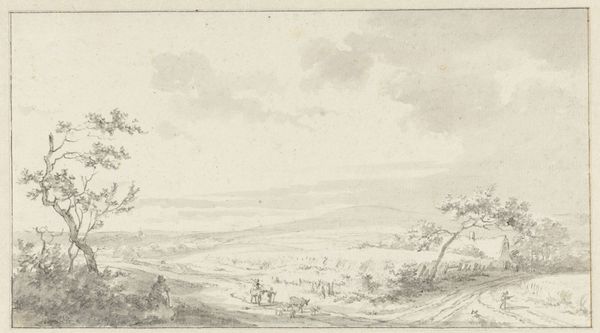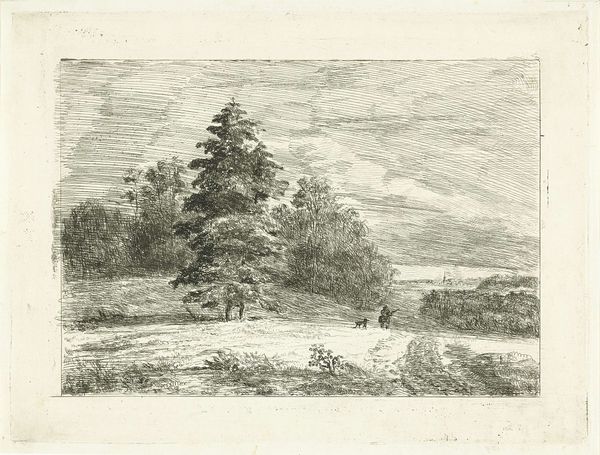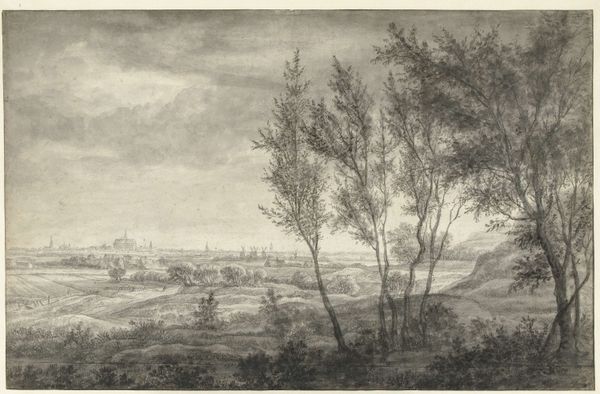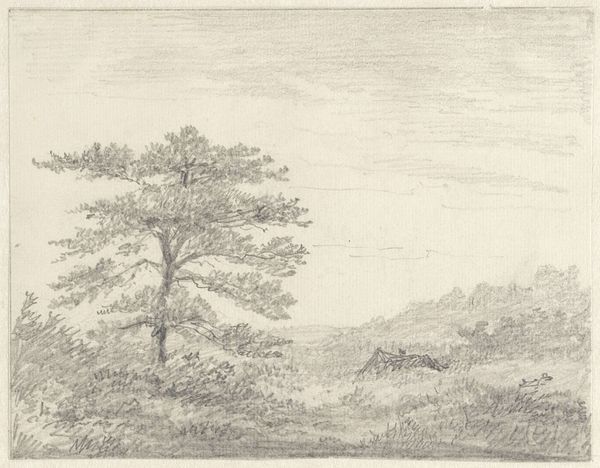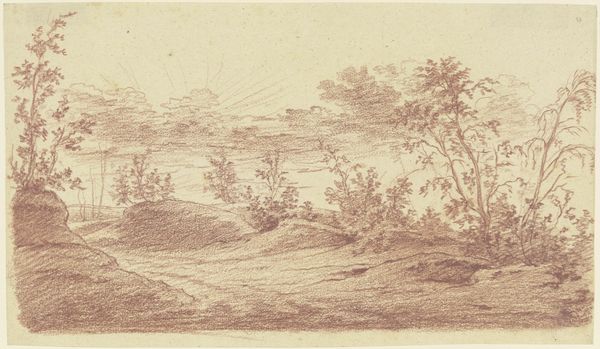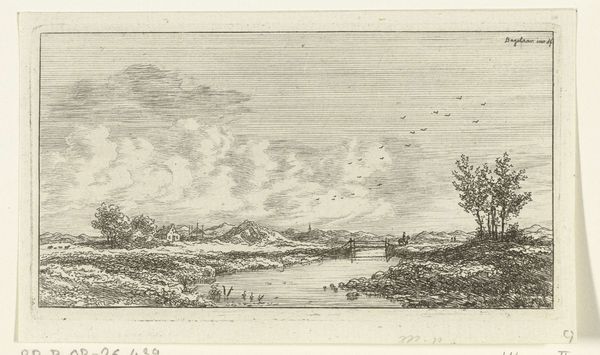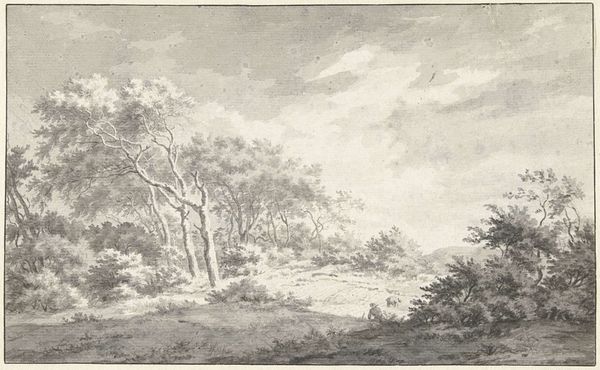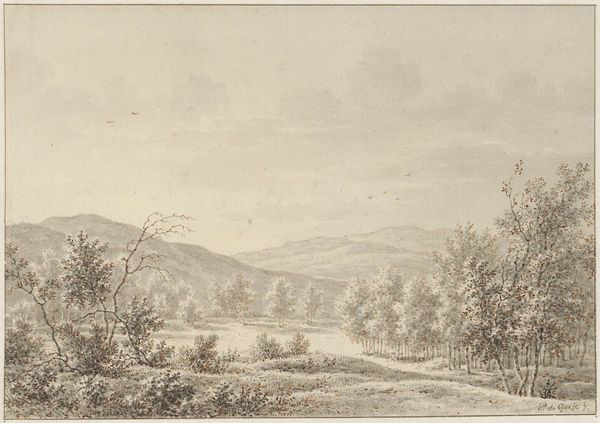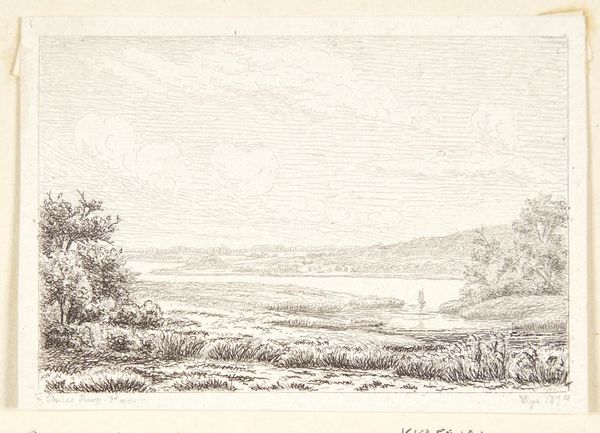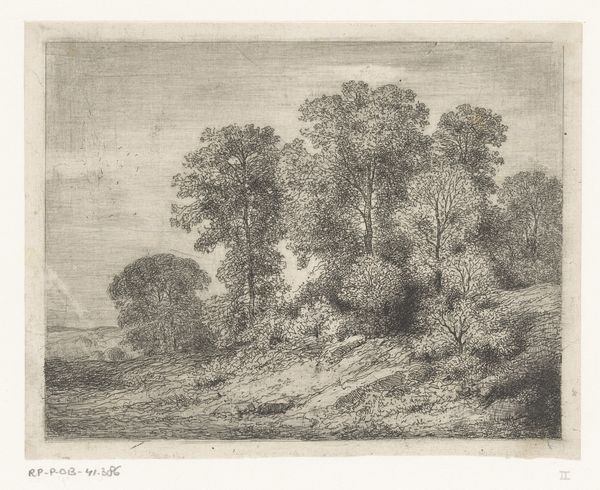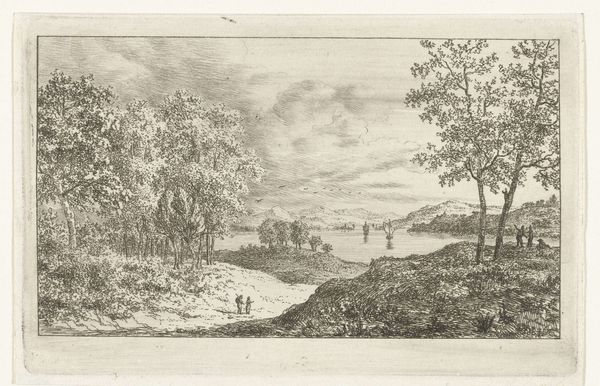
etching
#
16_19th-century
#
etching
#
landscape
#
realism
Dimensions: height 168 mm, width 228 mm
Copyright: Rijks Museum: Open Domain
Editor: So, this is "Heuvellandschap met twee vrouwen bij bosrand," a landscape etching by Willem Matthias Jan van Dielen from 1863. I find it very tranquil. The muted tones create a hazy effect that feels timeless. What draws your attention in this piece? Curator: It's fascinating to consider this etching within the context of 19th-century Realism. While seemingly just a tranquil landscape, the "real" lies in Van Dielen's representation of the Dutch countryside and the role of the rural population within it. Note the two women in the foreground: What activities were historically deemed suitable and unsuitable for women of varying social classes during this time? How does the location of the women in the foreground and how that highlights a social connection? Editor: Interesting. I hadn't really considered the figures beyond their simple presence. Is the intention to showcase daily life? Curator: Precisely. The image presents a specific cultural vision rooted in the visual traditions of the 19th century, yet is mediated by the realities of agrarian society. It challenges us to unpack how Van Dielen subtly reinforced or subverted contemporary ideals. The level of finish indicates some academic training as well. What do you think about this idea? Editor: I do think the perspective of situating it in its socio-historical context makes me appreciate this in a new way. It goes beyond the beautiful scenery; it’s a cultural statement. Curator: Indeed. By studying this etching, we not only admire its artistic merit, but we also gain valuable insights into the social and cultural fabric of 19th-century Dutch society. Editor: That is really thought-provoking! Thank you!
Comments
No comments
Be the first to comment and join the conversation on the ultimate creative platform.
